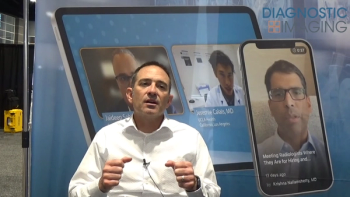
New SNMMI President Cathy Cutler, PhD Discusses Current Challenges and Goals for Nuclear Medicine
In a recent interview, Cathy Cutler, Ph.D., shared her perspective on a number of topics affecting nuclear medicine, ranging from isotope availability and reimbursement challenges for diagnostic radiopharmaceuticals to increasing patient interest in PET imaging.
A longtime researcher who has over two decades of experience in the development and assessment of radiopharmaceuticals, Cathy Cutler, Ph.D., said she is excited about the increased patient interest in positron emission tomography (PET).
“We’re at a point where patients know so much more about PET and they’re asking for this. They want to ensure their doctors have these tools to better inform their therapies. It’s exciting to see that. When you talk to patients, they’re out there now fighting with us to help make sure they have access to PET imaging, It’s not where I thought we would be about 20 years ago but it’s very exciting to see that is where we are today,” noted Dr. Cutler, the new president of the Society of Nuclear Medicine and Molecular Imaging (SNMMI).
Dr. Cutler said it’s important to build upon that enthusiasm in recruiting talented people into the field. Through recent surveys conducted through the SNMMI’s workforce pipeline, Dr. Cutler noted significant numbers of pending retirees so there is increasing urgency to ramp up recruiting efforts. Noting a visit to a local high school in Toronto by SNMMI leaders during the conference, Dr. Cutler said video testimonials from physicians, scientists, and technologists about the benefits of the field are also being shared with younger audiences to help spark interest.
As the director of the Medical Isotope Research Production and Development Group at Brookhaven National Laboratory in New York. Dr. Cutler said isotope availability is an ongoing challenge with demand likely to increase as more radiopharmaceuticals are utilized in patient treatment. Appropriate reimbursement is another challenge in the field, according to Dr. Cutler.
“Unfortunately, the CMS … looks at diagnostic radiopharmaceuticals as supplies, kind of like gloves so they basically bundle the costs,” posted Dr. Cutler. “It turns out those costs really don’t cover what it takes us to manufacture those drugs.”
(Editor’s note: For related content, see “
For more insights from Dr. Cutler, watch the video below.
Newsletter
Stay at the forefront of radiology with the Diagnostic Imaging newsletter, delivering the latest news, clinical insights, and imaging advancements for today’s radiologists.




























